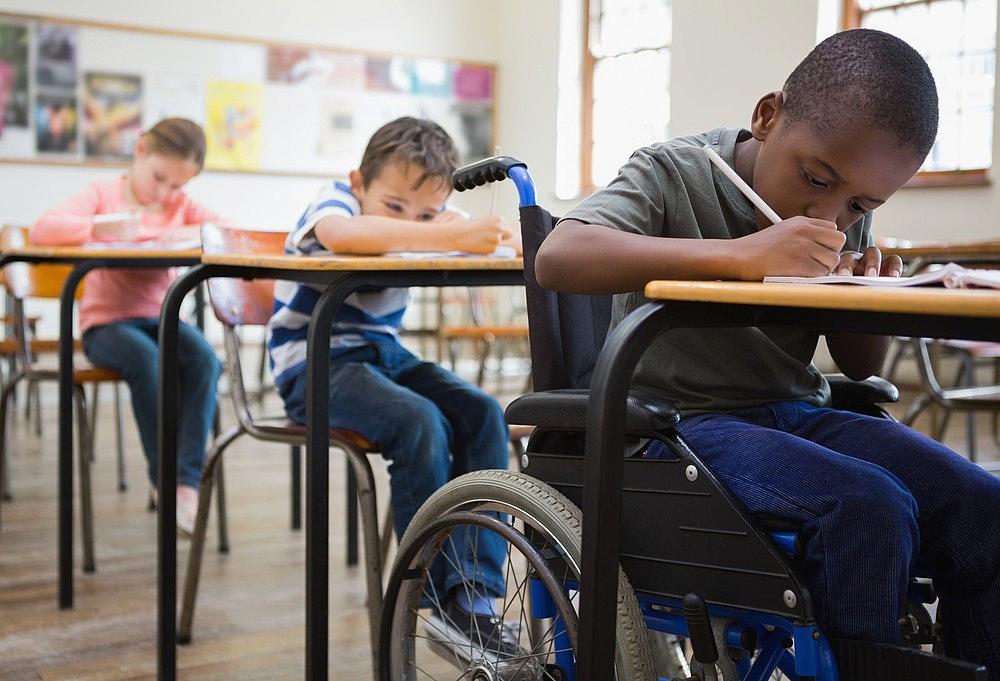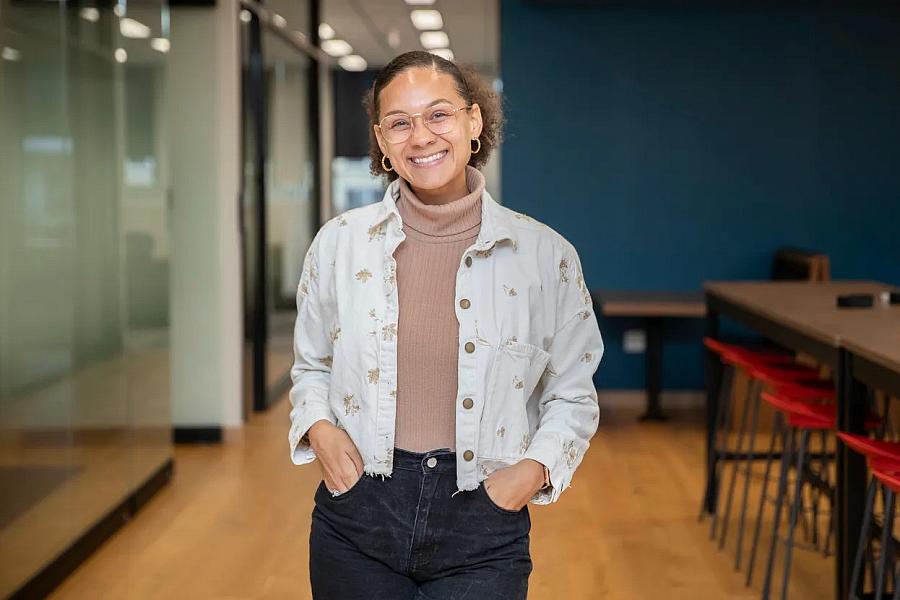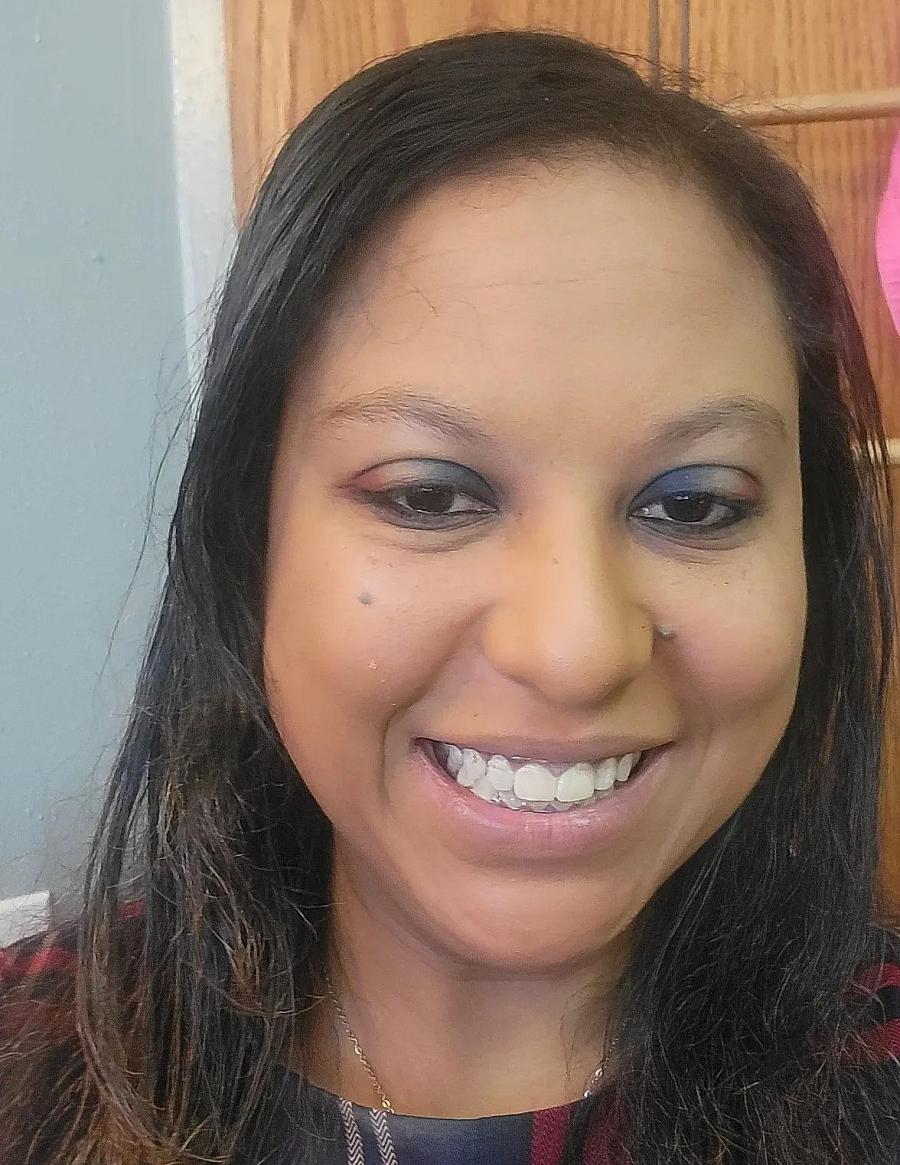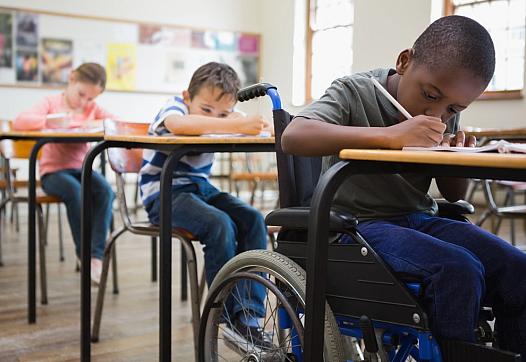The journey of autism and disability systems: A look at diagnosis, trust, and access
The story was originally published in Spokesman Recorder with support from USC Annenberg Center for Health Journalism.

Shutterstock
In 1998, the year I was diagnosed with autism, the Centers for Disease Control and Prevention estimated that 1 in 500 children had a form of autism. Today, education and awareness have shifted those numbers to 1 in 68 children who are being diagnosed with the autism spectrum.
My own experiences with autism started before I ever knew what autism was or before I was even conscious of disabilities. Through a push from the public school system, in 1998, my parents took me to a neurologist.
I went through a series of visits where I took tests. On the last visit I had with the neurologist. I was told to stay in the lobby; my parents went in to talk to him. They left his office crying. They told me I had autism.
What I was about to start was a journey through the special education and disability systems. The experiences I had growing up through the system gave me an informal education on autism as well as the systems around it and other disabilities.
Part 1: Diagnosis, healthcare, and the system that supports
It all starts with a diagnosis. In Minnesota, a qualified early childhood mental health professional can provide families with the evaluation needed to diagnose someone with Autism Spectrum Disorder (ASD). One of the ways a family can get their child tested for ASD is through a push from the schools. But families can also decide for themselves if they think their child has ASD and seek a diagnosis from a doctor without a push from the school.
“I know that in kindergarten, they can start collecting data and make recommendations for a diagnosis,” said Kelsey Joson, the founder of InControl-MN, which provides community-based services for adults with disabilities in the state.

Kelsey Joson, the founder of InControl-MN
Photo by Chris Juhn
After the process of being diagnosed, families can decide what course of action is best for their child. They can either put their child into one of the many special education programs in the state, charter schools that tend to offer disability-specific curriculum or decide not to pursue any of those routes depending on the needs of the child.
Lack of trust in the system of diagnosis
Alicia Hardimon is the parent of a 13-year-old son named Dave, who has autism and a rare genetic disorder. She lives in Eagle Bend, a community in rural Minnesota with a population of 546 residents. In Hardimon’s town, services for special needs children can be difficult to access compared to bigger cities with more resources.
Being a Black woman, she talked about trust issues many in her community have with the healthcare industry. “I believe the Black community as a whole doesn’t trust the health care community for many reasons, starting with the Tuskegee Experiment. Many Black people have a hard time accepting mental health as real and chastise their own as well.”
She has seen the health workers fail members of her own family when they needed help and says systematic racism played a role, including for her grandfather, who had cancer, as well as her father.
“My mother, a white woman, took him to most of his appointments and advocated for him when the family noticed his lack of care,” Hardimon said. “My dad was ignored for pain, and his hip was completely dissolved. He was refused pain medicine and made to wait four months until surgery.”
“Meanwhile, white friends of his received the same operation and were heavily medicated.” She related. “As a pain patient, I would have my mother or boyfriend go with me. I received better treatment and was heard — compared to [coming to an appointment] by myself.”
For many Black Americans, the lack of trust in the health care system can keep people with ASD and other disabilities from being diagnosed due to the lack of trust in the health care system overall.
Rural communities and the struggle to access needed services

Alicia Hardimon
Courtesy photo
Hardimon talked about issues she has witnessed play out in rural schools. “I see issues with communication with staff. Staff turnaround is constant, as is segregating special ed students from the general ed populations, even in children who do not present a risk to other children. Awareness of children with special needs is non-existent in schools as well.”
“As Dave gets older and ages out of traditional school services, there are no vocational programs, after-school resources, or adaptive sports in rural areas. And currently, he would have to travel more than four hours a day to attend public school with IEP services,” Hardimon continued.
Students in special ed have something called an Individual Education Plan (IEP), which aims to help tackle specific issues that students face around education and their disability.
“There also are few home supports or potential respite referrals for parents who may need help navigating the world of special needs. Advocates for IEPs, or individualized education plans, and your children are difficult to find and access almost in rural areas, especially with a new diagnosis.”
“I happened to have chronic illnesses and disabilities that led me to understand the system because of my issues in high school. I had no official diagnosis, and my mom and I had to fight to get resources, which ended up allowing me to be a true advocate for myself and my son and be able to try to utilize all of the resources available. Without that, he and I would have been left behind and not brought to potential.” Hardimon continued to say.
What are some of the entitlements that children with autism and other disabilities have?
In 1975, President Gerald Ford signed the Education for All Handicapped Children Act (Public Law 94-142). It was later changed to the Individuals with Disabilities Education Act (IDEA) in 1990 after a reauthorization. IDEA is a Federal law that makes it so free and appropriate public education is available for children with disabilities. That, in many cases, ends up looking like special education classes and an IEP.
After I was diagnosed, I switched schools and was bussed two towns away from Burnsville to Eagan, which is about 10 miles each way. The school I was going to was three blocks away. Back then, specific programs were designed for people with ASD, and programs for people with autism were spread to specific schools within the district I was in (ISD 196). The rest of my schooling was in Apple Valley in programs designed for ASD students. In the years since they have added more autism-specific programs to schools because more children are being diagnosed.
Are smaller class sizes really an advantage?
One of the supposed advantages of a special ed is class sizes are usually around seven students. Normal class sizes average around 23 (https://www.lrl.mn.gov/docs/2023/other/230478.pdf). But are smaller class sizes really an advantage?
The limitations start when you look at what each student has in their IEP. If you have a wide variety of needs in those seven students then teachers and the aides they have will have to teach possibly seven different lessons to try to help those students. From my own experience it’s hard to get pushed and to reach your potential when there’s such a varying degree of needs per classroom.
In special ed, we did the same math lessons and some other classes throughout my middle school experience. Whenever I asked for harder work, the special ed teachers talked down to me and insulted me. It seemed that the teachers would choose a middle point from where everyone was and teach that same lesson year after year.
When I was in adapted sports, I learned that special ed students, even at other schools, were learning the same lesson I was. High school wasn’t that much better. I’d see myself fall further and further behind other students in the so-called “mainstream classes (non-special ed classes),” and it got to the point where I realized I’d never catch up.
At some point, I gave up caring, and public school seemed like a waste of time. Between the bullying I went through almost daily and the constant lack of care that the school had, I sort of had the idea the school had given up on me. I wasn’t alone in this, other classmates I had back then felt the same. When you feel like nobody believes in you it makes you not care. That can stretch way beyond high school and prevent someone from chasing their dreams and learning what their potential is.
Transition schools and next step after high school
Students with disabilities are able to get the K-12 services up until they age out at 22. How that looks is through something called transition services. “In Minnesota they currently serve 46,670 students with disabilities from ages 14-22. Special education transition services and supports are planned and provided to students with disabilities in all of Minnesota’s high schools serving students with disabilities,” Minnesota Department of Education Commissioner William Jett said.
“Some school districts also have school sites especially to provide special education secondary transition services to adult students with disabilities, usually aged 18 to 22. These specialized sites can be located within a high school or in their own building in the community alongside other community businesses and residences. These school sites serving adult students with disabilities also have specialized classrooms for vocational and life skills instruction for adult students with disabilities.”
“In addition to offering special education secondary transition services for students with disabilities, high schools and school sites for adult students with disabilities offer connection with preemployment Transition Services (Pre-ETS) available from the Minnesota Department of Employment and Economic Development, as well as other community-based supports for persons with disabilities.”
“The services and supports students receive are especially focused on developing life skills and employment skills and include planning for employment, education, and life within their communities after high school. In all of these sites, the transition services and supports integrate the students’ employment and life skills experiences within their families and communities.” Jett said.
From my own experience of going through a transition program, I can say that they are great for building lasting connections and friendships. However, they don’t help people realize their dreams and reach their potential. My experience is for people who are less affected by their disability; there’s not really much of a benefit. Those more affected by it tend to get the most from it.
Just like in special ed, they tended to take the middle point for autistic students and teach at that level throughout each special ed class.
The autism experience and education, some of my experiences and thoughts
With my experience in the public school system, special ed had its ups and downs. From my initial diagnosis to the challenges of navigating the public school system, there were some incredibly tough times. We still live in a very ableist society — a daily reminder for people who are more noticeably disabled than I am.
At an early age, I learned that life isn’t fair. But the struggles I endured; I wasn’t alone in it. Every person who steps off a short bus knows the stares you get and the judgment that comes with it when people see you get off that bus.
For the past 13 years there’s been a reflection I’ve had looking back at what I’ve gone through with schooling and where I’ve been able to get to. But the struggles I’ve endured are nothing compared to what many others with disabilities have gone through.

